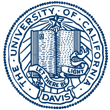
This REU program was funded through NSF PHY-1852581.
Students' names link to their final papers. Advisors' names link to the research group web pages.
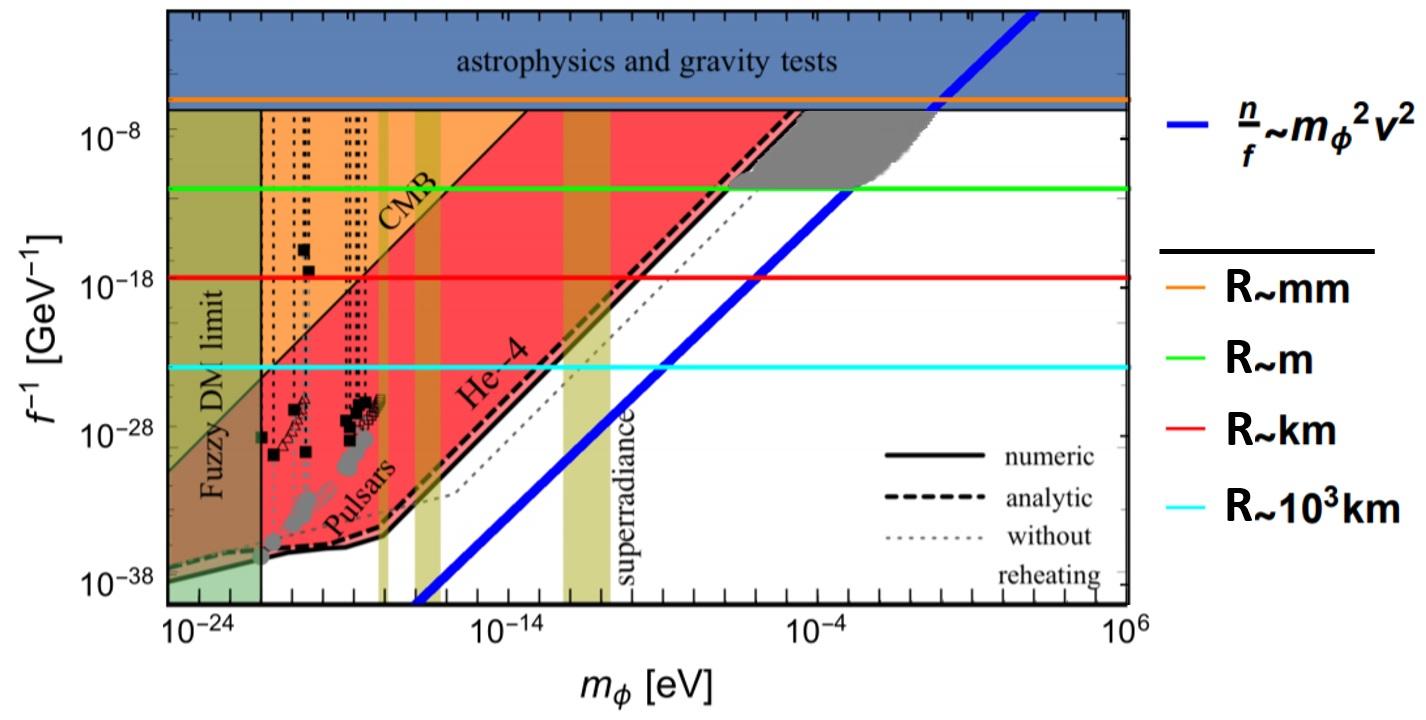
For a candidate dark matter particle, parts of parameter space excluded by existing data and accessible through a proposed new measurement. (See Hannah Day's project.)
Astrophysics
We know the universe is expanding because the light reaching us from galaxies in all directions is red-shifted. The emission spectra from hydrogen atoms, a recognizable pattern, appears shifted to slightly lower frequencies than when measured in a laboratory, as expected if the source is receding. About one hundred years ago, Hubble noticed a correlation between the brightness of galaxies and their red shift: the dimmer (and hence on average more distant) galaxies have larger red shift. This is exactly as expected if the universe is expanding uniformly. The Hubble constant indicates the rate of this expansion. Margie Bruff (University of North Carolina at Chapel Hill; advisor Lloyd Knox) explored a mystery of modern cosmology. A different approach to finding the Hubble constant is to start with the early universe as seen through the Cosmic Microwave Background (CMB), then calculate its development over the intervening 13.8 billion years. This gives a value smaller by almost 10%, a difference that exceeds the known sources of error. Margie built additional parameters into the computational model so that it can match both the CMB data and the red-shift measurements of the Hubble constant.
Shelby Klomp (Gustavus Adolphus College) and Joseph Levine (Chico State University) worked together (advisors Tony Tyson and Mani Tripathi) on setting up an experimental search for a particular dark matter candidate known as a hidden (or dark) photon. Hidden photons, unlike regular photons, have mass. As a result, hidden photons with longitudinal polarization are far more likely than regular photons to penetrate a conducting wall. The experiment involves an antenna within an electrically shielded room. Shelby and Joseph did calculations modelling the antenna's response to different signals and compared to physical measurements. The complicated resonances of the antenna-room system factor prominently. Understanding the expected signal in the absence of hidden photons is crucial; without that, it will be impossible to identify any anomalies introduced by the sought-after particles. Shelby and Joseph reproduced various general features. Additional structure in the measured spectrum (shown below; the colors indicate only that the curve was stitched together from many data sets) will require a more detailed model before it's possible to attribute any part of it to hidden photons.
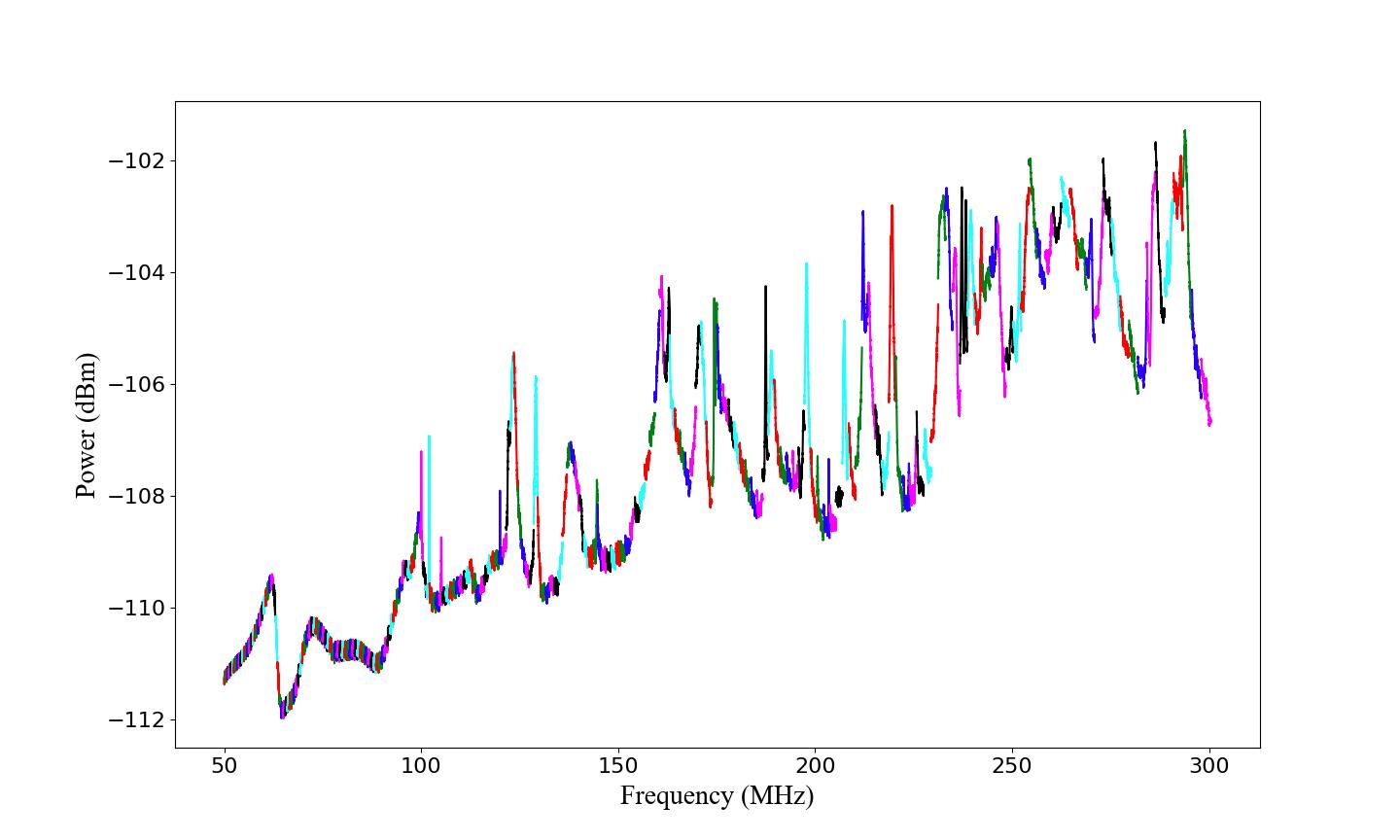
Mapping the composition and dynamics of galaxies -- the distribution of stars and gases, and how they move -- is important for understanding how the galaxies formed. However, this is difficult to do, since distant galaxies appear to us as small dots, covering only a fraction of a degree across the sky. One trick is to look at galaxies where a heavy mass lies between them and Earth. Through gravitational lensing, the light from such galaxies bends as it passes the mass. When it arrives at Earth, it appears to have originated from a range of angles larger than the actual extent of the galaxy. Effectively, the gravitational lensing magnifies the galaxy. Kris Mortensen (Northwestern University; advisor Tucker Jones) analyzed magnesium spectral lines in such a lensed galaxy. He found unexpected velocity within the gas. A next step is to confirm and improve on the results, through analysis of radiation from other atoms.
Condensed Matter Experiment
Piper Aislinn (Evergreen State College; advisor Shirley Chiang) used scanning tunneling microscopy to search for characteristic features of small amounts of lead deposited on a germanium surface. Previous measurements of lead on silicon showed islands with characteristic heights, possibly from quantum size effects. This summer's experiment was to test the generality of this phenomenon. Piper achieved preliminary images, showing the necessity of thoroughly cleaning the germanium surface before adding the lead. Her data suggested that lead on germanium has entirely different behavior, forming much larger islands than on silicon.
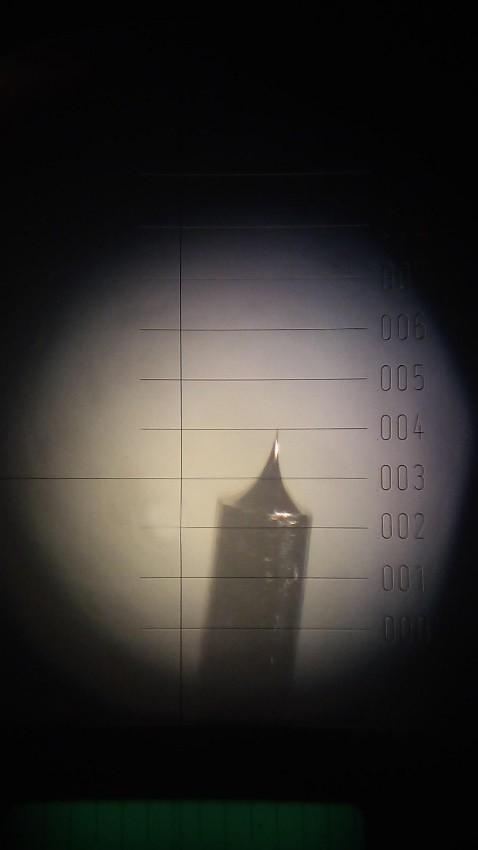
STM tip. Horizonal lines are 0.1 mm apart.
There is great recent interest in "topological" materials. The topology in question relates to how the electronic wave functions behave in momentum space. It leads to conserved quantities that in some cases take on universal, material-independent values. Low-lying excitations can mimic properties of particle physics, such as the linear dispersion relation of light. Potential applications include everything from solar cells to quantum computers. Aaron Austin (Oklahoma State University; advisor Valentin Taufour) grew single crystals of CeCoGe3 by melting together the constituent elements and bismuth, then cooling the solution. (Tricks such as using an apparently unrelated element, in this case bismuth, are a standard part of crystal growth.) He then did x-ray diffraction to confirm that the sample was indeed the desired material, and electrical and magnetic measurements for initial characterization of its behavior. More detailed explorations will follow.
Nuclear magnetic resonance (NMR) detects the motion of nuclear spins in a magnetic field. Typically this means a large magnetic field is applied externally. However, if the measured sample has a magnetic response, then its own magnetization affects the total field experienced. This leads to a comlicated magnetostatics problem, and for most shapes the total field is no longer constant throughout the sample. NMR signals become broadened, since any measurement simultaneously tests responses to a range of magnetic fields. Daphne Garcia (Portland State University; advisor Nicholas Curro) tried to reduce the signal width in TmVO4. Reducing the applied magnetic field strength helps. The next step will be to try an ellipsoidal sample, a special shape where the total field will be constant throughout.
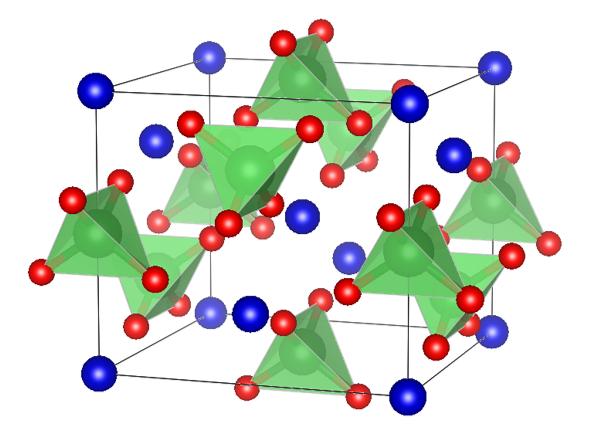
Crystal structure of TmVO4.
Paul Hoffmann (CSU San Marcos; advisor Rena Zieve) looked at images from of two-dimensional artificial sandpile. The final goal is to analyze the avalanches that occur when the pile is rotated. To compare tens of thousands of avalanches, the entire process needs to be automated. Paul tried to improve the algorithm for identifying the center of a grain based on a digital image where the grain diameter is about three pixels. The light intensity varies across the grain, and Paul tried to find a formula that captures this variation quantitatively. A first check of the algorithm's performance is that the ball centers are randomly distributed relative to the pixel coordinates. Paul's adjustments helped with the center identification but leave room for further improvement.
Spencer Weeden (Carleton College; advisor Dong Yu) measured the diffusion length of excited electrons in MAPbI3. He excited the electrons by irradiating a spot on the sample with a laser, then measured how many made it to an electrode nearby. (The schematic below shows this setup.) Varying the irradiation spot also changed the distance the electrons had to travel. In some ways the measurement mimics the physical processes in a photovoltaic, where charge carriers are excited by absorbed solar photons rather than by a laser beam. Increasing the diffusion length, or characteristic distance travelled by the electrons, means that more of them will contribute to driving an electric current. Spencer found that the diffusion length increases by a factor of three at low temperatures. The change is probably related to a change in crystal structure near 160 Kelvin; understanding the effects of the crystal structure may guide searches for even better candidate photovoltaic materials.
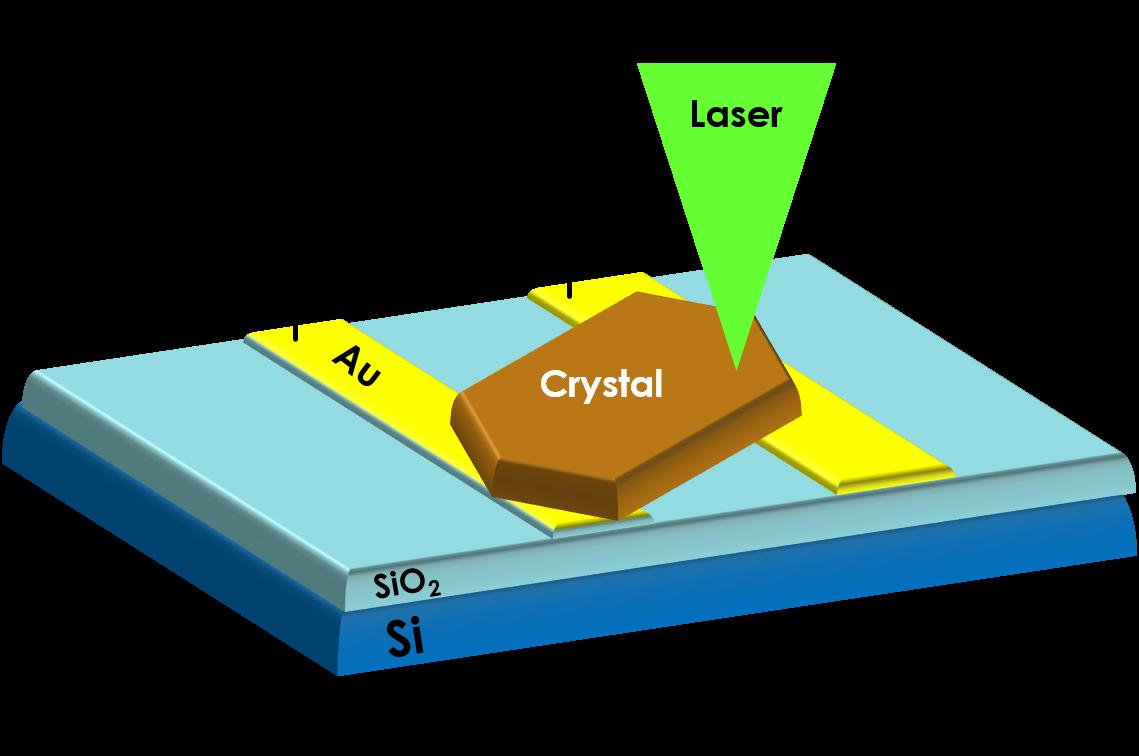
Condensed Matter Theory
Yb2Si2O7 shows several phases as a function of applied magnetic field. Sid Jindal (University of Illinois at Urbana-Champaign; advisor Rajiv Singh) tested how much of the phase diagram could be reproduced by a simple model of magnetic sites with nearest-neighbor interactions. The model uses spins free to orient within three-dimensional space ("Heisenberg spins"), but with symmetric interactions within the $xy$-plane. The model does exhibit phase transitions, but with only three total phases rather than four it apparently cannot completely capture the physics of Yb2Si2O7.
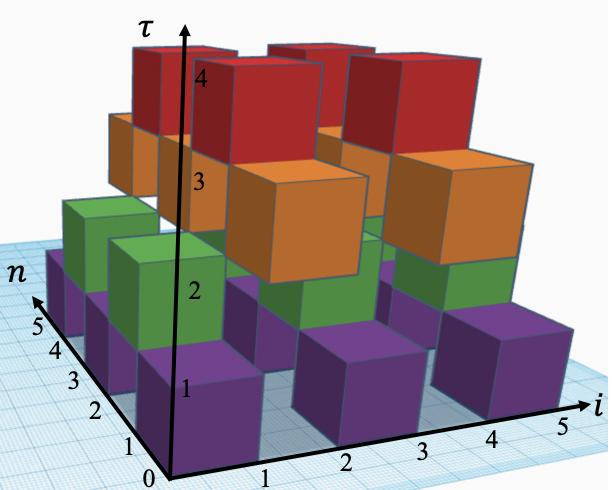
A large part of condensed matter physics consists of the study of crystals, solids with a repeating pattern of atoms. Real crystals are complicated by their huge size, with roughly Avogadro's number of atoms per cubic centimeter, and also because they inevitably contain defects, which can significantly affect the crystal's properties. In recent decades, atomic physicists have constructed optical lattices, a type of model crystal with lser beams holding atoms in regular locations. Optical lattices are much smaller than solid crystals, but there is a great deal of control over their atomic interactions. Hence they are an excellent system for testing how well computational models work. Hannah Manetsch (University of Illinois at Urbana-Champaign; advisor Richard Scalettar) wrote Monte Carlo code to calculate average properties of a model that allows hopping between nearest-neighbor sites and a dipolar interaction between neighboring electrons. The diagram above helps keep track of the interactions present in the system.
Nuclear Experiment
Anya Wolterman (Macalester College; advisors Daniel Cebra and Manuel Calderon de la Barca Sanchez) set up code for a Glauber model, which describes the collisions of two heavy nuclei in terms of the interactions of their component nucleons. This is really a statistical problem: given the expected distribution for nucleons within a nucleus, and the displacement of the nuclei from a perfect head-on collision, what is the expected energy, transverse momentum, etc.? Anya compared her calculations to experimental results for gold and lead collisions from the Large Hadron Collider at CERN. She found good agreement for a parameter known as eccentricity. The ultimate goal is to explore elliptic flow, an asymmetric pattern of particle ejection from the collision region which occurs when the collision has enough energy to generate a quark-gluon plasma.
Particle Experiment
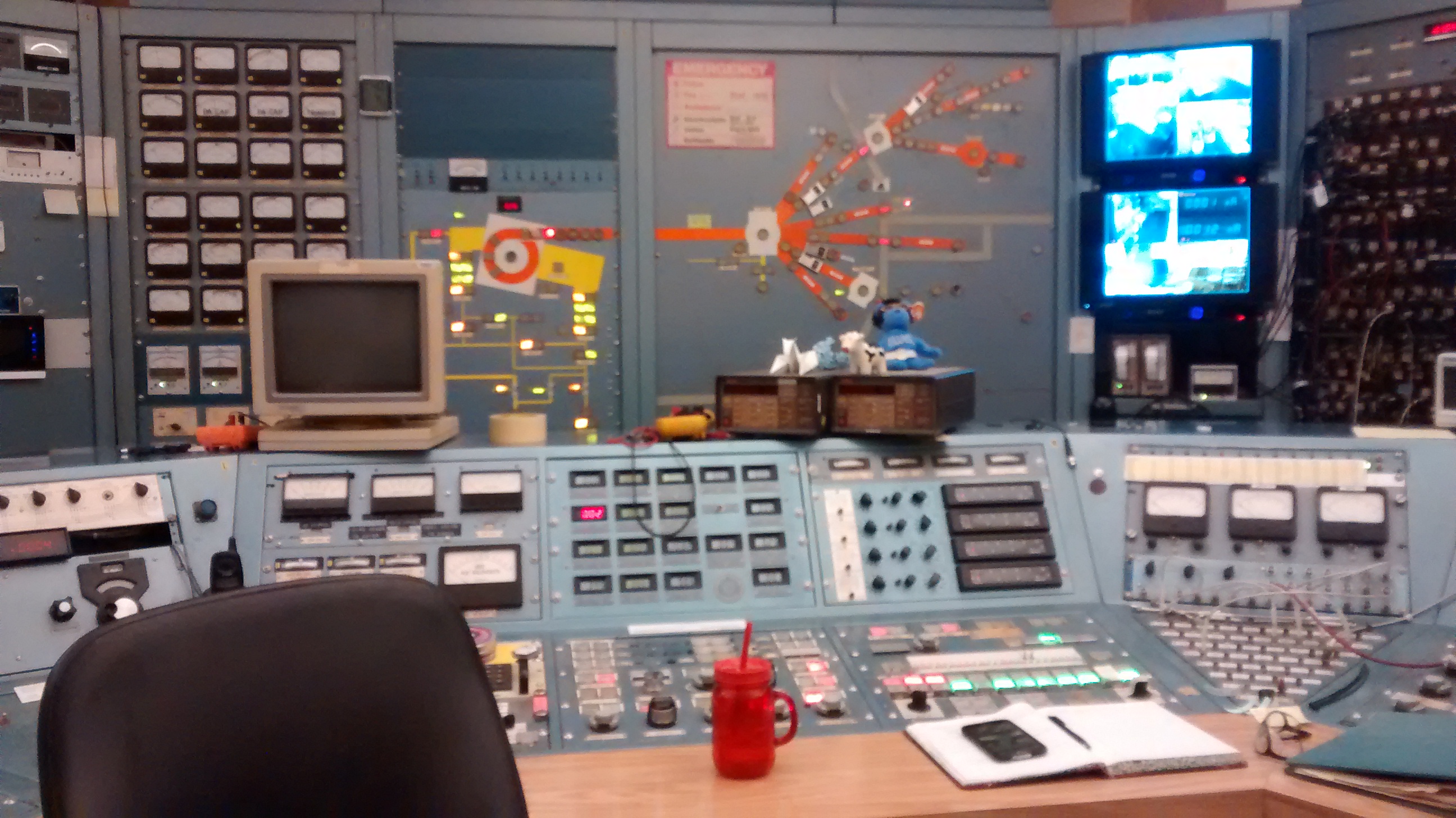
Crocker Nuclear Laboratory, next to the Physics Building on the UC Davis campus, houses a cyclotron. The control room (above) dates back to the 1960's, when computers were much larger but less powerful than they are today. Berlin del Aguila (Humboldt State University; advisor Eric Prebys) worked on modernizing part of the control setup, writing Python code that detects one of the beamlines and adjusts various magnets to focus the beam. Eventually the entire control setup will be replaced; a single modern laptop can probably do what's needed.
See also Shelby Klomp and Joseph Levine's project involving both Astrophysics and Particle Experiment.
Particle Theory
Although various indirect measurements, such as rotation patterns of galaxies, point to extra mass that does not radiate visible light, no "dark matter" particles have been observed directly despite decades of efforts. Each experiment targets a possible form for the dark matter, with a particular range of masses and interactions with normal matter. Hannah Day (University of Oklahoma; advisor Markus Luty) calculated how a very light dark matter particle could work. To the Lagrangian describing the Standard Model of particle physics, she added terms corresponding to such a particle and its interaction with conventional matter. She then considered experiments that might detect this type of dark matter. Her calculations rule out Earth-based measurements but suggest that a satellite experiment could have the needed sensitivity.